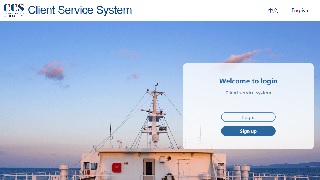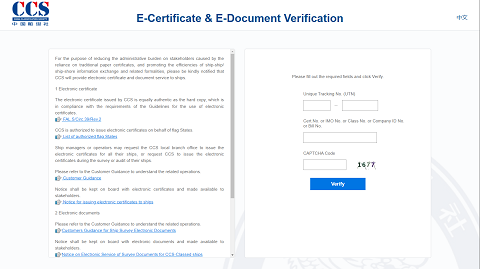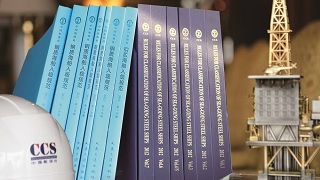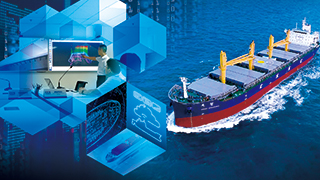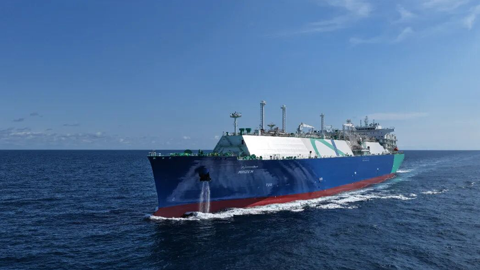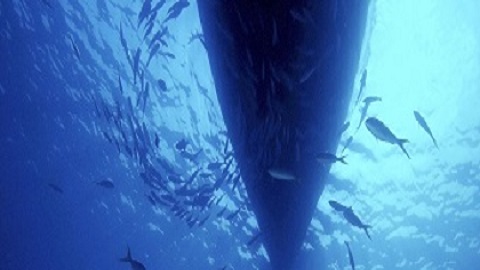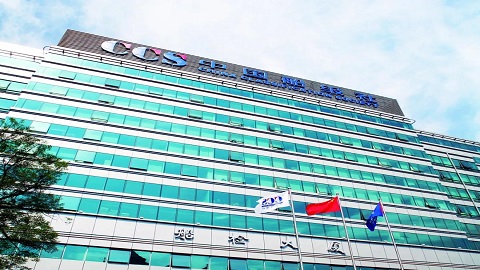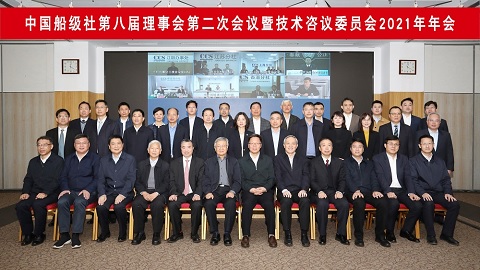The 5500HP ammonia-powered tugboat project of COSCO Shipping Heavy Industry (Dalian) is the first ammonia-powered ship project in China. During the progress of this project, China Classification Society (CCS) has actively promoted the transformation of ammonia-fueled ships from theory to practical application, participated in ship design optimization, provided risk assessment solutions for ships, put forward preventive suggestions and measures for key risk points of the application of ammonia fuel, and implemented them in ship construction, thereby guaranteeing the smooth progress of this project.
By Cheng Guanlong, Yu Jingqi CCS Dalian
Branch
The 5500HP ammonia-powered tugboat
project of COSCO Shipping Heavy Industry (Dalian) is the first ammonia-powered
ship project in China. During the progress of this project, China
Classification Society (CCS) has actively promoted the transformation of
ammonia-fueled ships from theory to practical application, participated in ship
design optimization, provided risk assessment solutions for ships, put forward
preventive suggestions and measures for key risk points of the application of
ammonia fuel, and implemented them in ship construction, thereby guaranteeing
the smooth progress of this project.
Since CCS started the cooperation with
COSCO Shipping Heavy Industry (Dalian) on the 5500HP ammonia-fueled tugboat
project in 2021, CCS has also participated in research on multiple sub-projects
such as "Research on the Rules Applicability and Survey & Test
Requirements of Ammonia-fueled Ships and Their Key Equipment", "Key
Technology Research and Engineering Demonstration of Ammonia-fueled Harbor
Workboats", etc. Through these projects, CCS has promoted the development
and formulation of relevant standards and rules, and improved its risk control
capabilities of application of ammonia fuel on ships.

Solving
Technical Problems
The 5500HP ammonia-fueled tugboat of
COSCO Shipping Heavy Industry (Dalian) is the first ammonia-fueled ship project
in China, and CCS experts have solved four outstanding technical problems in
this project based on years of technical experience.
Firstly, CCS has conducted research on
the design and arrangement of the ammonia fuel containment system, completed
the design and arrangement of the ammonia fuel containment system and supply
system, and fully satisfied the requirements of hazardous and toxic zones or
adopted alternative avoidance measures; it has ensured the safe storage and
transportation of ammonia fuel, reduced the risk of ammonia leakage and accidents,
and protected the safety of the crew members and environment.
Secondly, CCS has conducted research on
the design and arrangement of ammonia supply system, completed the design and
research of key core equipment for ammonia-fueled ships, including ammonia fuel
engine, ammonia supply system, liquid ammonia storage tank, fuel bunkering
station, etc., and completed the arrangement on the AM model drawing according
to the requirements of the hazardous zone classification map and relevant rules
by focusing on the arrangement and installation of ammonia supply pipelines,
GVU and its instrument valves and control systems to ensure its rationality and
operation safety, avoid leakage risk, and develop emergency measures; it has
also completed the design of fuel supply system, associated ventilation, power
distribution and control, emergency measures, etc.; through this research, CCS
has ensured that the ship design and operation comply with the requirements of
the International Maritime Organization (IMO) and relevant regulations,
providing an example of safe operation for the industry. In the future, CCS
will promote the technological development of ammonia as a marine fuel,
providing a practical basis for the application of clean energy in the shipping
industry.
Thirdly, CCS has conducted research on
ammonia-fueled ship emission control technology, completed the catalyst
packaging and coupling technology, developed catalyst packaging methods based
on engine operating characteristics and the requirements of ship exhaust for
catalyst, and determined relevant technical parameters. Through the coupling
catalyst, CCS has improved the utilization rate of unburned NH3 in SCR
reaction, and eliminated NH3 that has not involved in the reaction. CCS has
also determined the coupling layout of the catalyst based on fluid simulation,
bench test and other test data. CCS has completed the catalyst optimization
design after multiple tests, and optimized and reduced the dimensions of
engineering machine to meet the requirements of the ship arrangement. CCS has
completed the fabrication of the prototype of exhaust gas treatment device and
participated in the joint commissioning and testing of the main engine. After
multiple tests, it has been proved that the nitrogen oxide emissions can meet
the second stage exhaust emission requirements of the national standards, and
the equipment has been transported to CRRC Dalian Co., Ltd. for main engine
commissioning and testing. This research will provide a technical route for the
R&D of exhaust treatment device of diesel engines for ammonia-fueled ships,
laying a foundation for the R&D of green ships.
Fourthly, in view of the immature
ammonia fuel application technology and the lack of supporting standards, and
based on the existing "Guidelines for Ships Using Ammonia Fuel" and
ammonia-powered ship projects, CCS has studied its rules, standards, and
potential safety risks in the design and construction of ammonia-fueled ships,
conducted research on the technical standards for design and plan review of
ammonia-fueled ships, and studied the survey and testing items as well as
acceptance standards during the construction phase of ammonia-fueled ships
based on the "Guidelines for Ships Using Ammonia Fuel" and the
"International Code of Safety for Ships Using Gases Or Other Low-Flash
Point Fuels", so as to strengthen the safety of ammonia fuel engine
operation. CCS has also carried out hull design, fuel supply system design,
ammonia propulsion system design for ammonia-fueled ships, as well as preliminary
research on the standards for ammonia fuel production, transportation, storage,
exhaust treatment, etc. to support and guarantee the safe development of
ammonia-fueled ship technology.
Risk Control
It is important to ensure the safety of
crew members in the R&D of ammonia-fueled harbor workboats. Ammonia is
toxic, therefore strict measures must be taken to prevent leakage from
pipelines and storage tanks, especially during the ammonia bunkering process.
For this purpose, based on the HAZID (Hazard and Operability Analysis) and
HAZOP (Process Hazard Analysis) reports on the design scheme for ammonia-fueled
harbor workboats, CCS Wuhan Rules&Research Institute has carried out
in-depth quantitative risk analysis on the technical characteristics and functional
requirements of the 5500HP ammonia-fueled tugboat.
This analysis aims to assess the
potential high-risk scenarios, and put forward effective risk mitigation
measures based on the assessment results to ensure that the risks are within an
acceptable range. Through the research on the HAZID/HAZOP report, two high-risk
scenarios were successfully identified, and quantitative calculations and risk
assessment were made for these scenarios. CCS has simulated the diffusion of
volatile vapors that may be generated after ammonia leakage through the 3D
simulation technology, including predicting the scope of its combustion
explosion and toxic effects.
Based on these detailed simulation
results, CCS has proposed a series of targeted risk control measures,
including:
1. Divide the restricted zone of operation
according to the quantitative calculation results, and strictly control the
entry of non-bunkering personnel within the restricted zone. The bunkering
personnel should wear PPE and portable ammonia vapor detectors. Meanwhile,
bunkering should be arranged according to the wind direction during on-site
operations, and, as far as possible, be carried out when the wind direction is
opposite to the bunkering dock.
2. Install a water spray system above the
bunkering joint at the bunkering station and above the interior of the fuel
preparation room. When leakage occurs, the water spray system will be
automatically activated to reduce the concentration of leaked ammonia gas, and
suppress the diffusion of ammonia gas to some extent;
3. For the steering engine room inlet at
the stern of the ship, the safety area air inlet at the bow of the ship, and
the opening facing the bunkering station and the side of the ship in the
driving management area, the diffusion range of toxic ammonia may cover the
above-mentioned positions in case of leakage. It is recommended that the
above-mentioned air inlets and openings be designed as closed types. At the
same time, a sufficient number of PPE should be provided in the steering engine
room and driving management area.
These measures aim to further eliminate
or reduce the potential risks in high-risk scenarios, lay a solid foundation
for safe operations including ship design, ammonia fuel bunkering process,
ammonia leakage prevention, etc., and provide important reference for the
application of ammonia fuel in ships to promote the safe application of
ammonia-fueled ships and the sustainable development of the industry.
Since the construction of this project
started at the beginning of the year, it has been steadily advanced, and is
about to be completed and delivered by the end of 2024.
Note: If you need to reprint, please indicate the source of the information.

